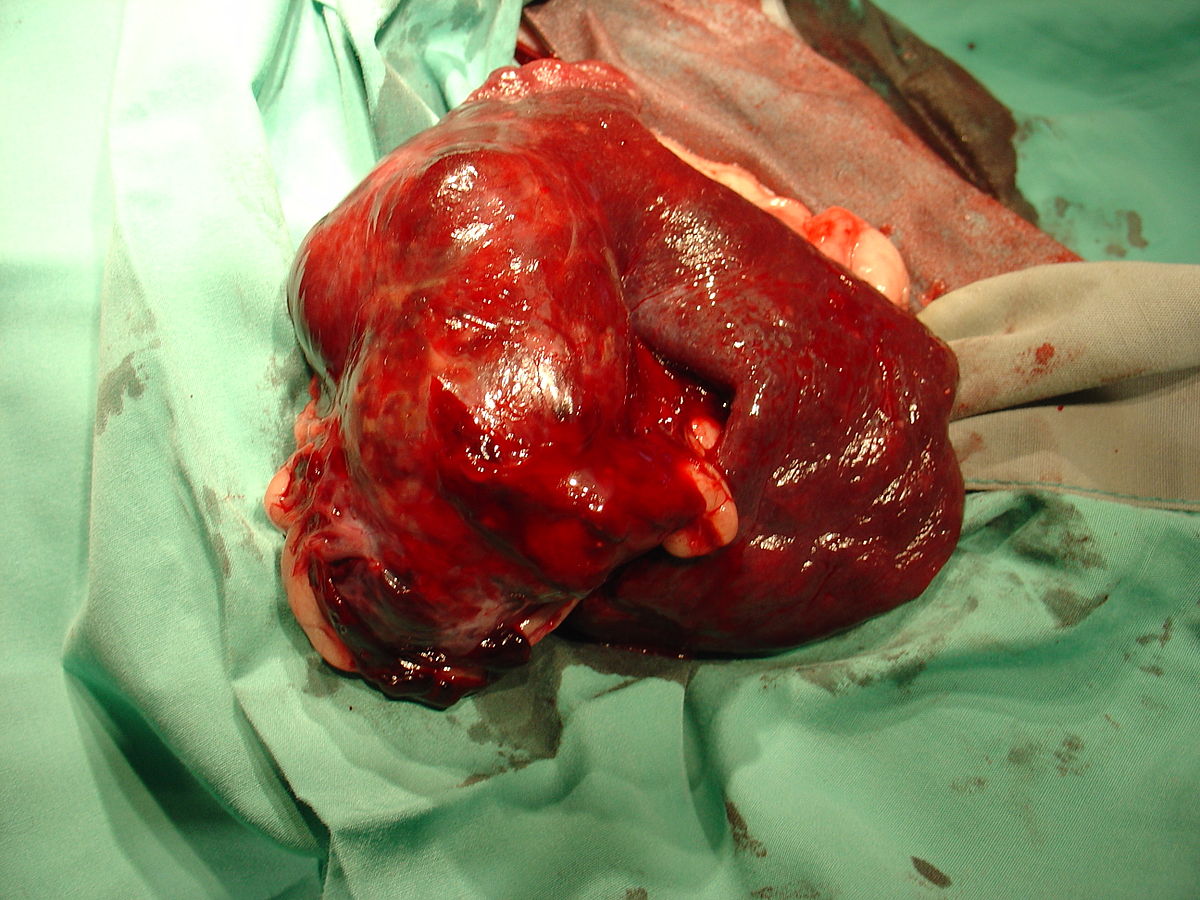When caring for your German Shepherd, you will likely be concerned that your dog enjoys good physical health and emotional wellbeing. From providing him with a healthy diet to ensuring regular exercise, you have the basics covered.
However, as your dog ages, you may be concerned with more than just the basics of health and wellbeing. For instance, you may become concerned that your pet may develop Hemangiosarcoma, which is, unfortunately, more common among some dog breeds, including the German Shepherd.
What Is Hemangiosarcoma?
Hemangiosarcoma is a highly progressive cancer of the liver or spleen, often found in German Shepherds. Hemangiosarcoma occurs when tumors develop in the liver and spleen causing cancer cells to spread via the blood vessels.
Often, Hemangiosarcoma develops in the spleen first and spreads to the liver. From there, the cancer can spread to the lungs, and, in some cases, even to the heart or the brain.
Tumors grow as they are enlarged by blood filtering in through the blood vessels. When a tumor ruptures, it can cause severe hemorrhaging which may lead to collapse and eventual death.
Hemangiosarcoma is a serious, rapidly progressing form of cancer. If you are at all concerned that your German Shepherd may be developing this condition, you should take him to a vet immediately for examination.

Symptoms Of Hemangiosarcoma
While Hemangiosarcoma often goes undetected until a rupture occurs, there are some early symptoms you can watch for. You should also be aware that this cancer is more likely in German Shepherds who are eight years old or older and is more common among males.
Some of the early symptoms of Hemangiosarcoma that you can watch for include:
- Changes in mood or habits. If your dog seems overly tired, depressed or disinterested in his food, this could be a sign of lethargy related to the development of Hemangiosarcoma. You may also notice that your dog has lost weight.
- Limited range of motion. If your dog seems to be less active than usual, is experiencing a limited range of motion or becomes disinterested in exercise, he may be in pain from undetected tumors that have developed.
- Swelling of the lymph nodes or fever. While these symptoms may also be associated with minor illnesses, you should pay attention to any such symptoms as they could be early signs of liver or spleen cancer in your German Shepherd.
Other more serious symptoms which you probably will not notice until the disease has progressed significantly include:
- Lumps on the body. These masses may be found on the abdomen, particularly around the rib cage. Lumps may also be found in other places around the dog’s body. These masses are often dark red or black in color.
- Seizures or paralysis. Another serious symptom of Hemangiosarcoma includes seizures or collapsing. Your dog may have fitful seizures which are causing obvious suffering, or he may simply stop moving altogether.
Any of these symptoms, early or progressive, are reason to take your German Shepherd to the vet for a professional evaluation.
Causes Of Hemangiosarcoma
The exact cause of Hemangiosarcoma, as with many types of cancer, is not known. However, studies indicate that this cancer is more common among certain dog breeds, and among male German Shepherds in particular, suggesting that genetic factors are responsible for Hemangiosarcoma.
The tumors begin to form from the cells that line the blood vessels of the heart, spleen or liver. The exact cause is not known, but it is known that these cancerous cells are predisposed to spread rapidly.
One form of the disease, cutaneous hemangiosarcomas, also called dermal hemangiosarcomas, may be related to prolonged exposure to ultra violet light. This type of hemangiosarcomas is a form of skin cancer and is often manifested through lumps found on hairless areas of the body, such as the inner thighs and abdomen.
Diagnosing Hemangiosarcoma
The only way to ensure an accurate diagnosis of hemangiosarcomas is to take your German Shepherd to the vet for an examination and tests.
A diagnosis will generally begin with a basic health examination including blood work. Blood tests may reveal anemia, which can be an indication that a tumor has ruptured.
The vet will probably also gently examine the dog’s abdomen with his hands in search of any external masses. Fluid samples may also be taken from the abdomen to determine if blood is present in areas where it should not be found in a healthy dog. This would be an indication of blood vessels having burst as a result of the tumors.
Once the general exam is over, a vet will usually do an ultrasound, X-rays and a CT scan in order to detect the development of Hemangiosarcoma related tumors in the internal organs or elsewhere in the body.
Treatment For Hemangiosarcoma
Removing the cancerous tumors before the disease has spread too far is the ideal treatment for Hemangiosarcoma.
Masses can be surgically removed fairly successfully, although usually not all of the cancerous tissue can be removed. If Hemangiosarcoma has spread to the spleen, a splenectomy may be performed to surgically remove the organ.
In severe cases, a vet may recommend chemotherapy or radiation. However, both of these treatments have severe side effects, and the treatments are not always successful. In some cases, a dog may not survive chemotherapy, so this treatment option should not be taken lightly. Managed hyperthermia, an induced body temperature increase, is another possible treatment.
During various forms of treatment, your dog may require blood transfusions, intravenous fluids or antibiotics.
Each case of Hemangiosarcoma is different, and only a thorough examination and diagnosis from a vet can determine which treatment will be best for your dog.
Prognosis For Hemangiosarcoma
Unfortunately, there is no absolute cure for Hemangiosarcoma. In most cases, even if the tumors are caught early and removed, the cancer will continue to progress regardless of treatment.
However, prognosis varies from dog to dog. Any number of factors may determine how long a dog will survive Hemangiosarcoma, from age to gender and from genetic history to the stage of the disease when treatment begins.
Most types of internal Hemangiosarcoma, where tumors and masses are found in the internal organs or body cavities, are rapidly progressing, and a dog diagnosed with this form of the cancer is not likely to live more than a few months.
However, with early detection and professional treatment, a dog’s lifespan may be extended beyond what it would be without diagnosis, and in some cases a dog may go into remission and enjoy a fairly normal life. But most dogs diagnosed with this type of Hemangiosarcoma do not live more than a year.
With cutaneous hemangiosarcomas, there is much less likelihood of rapid progression, especially if caught early. With this form of the disease, a dog will likely go into remission after treatment.
Symptoms of Hemangiosarcoma should never be taken lightly. If you have the slightest suspicion that your German Shepherd may be developing this form of cancer, immediate treatment may be necessary to save your dog from suffering.
Do not hesitate to take your German Shepherd to a vet for examination and diagnosis at the earliest warning signs of Hemangiosarcoma.




